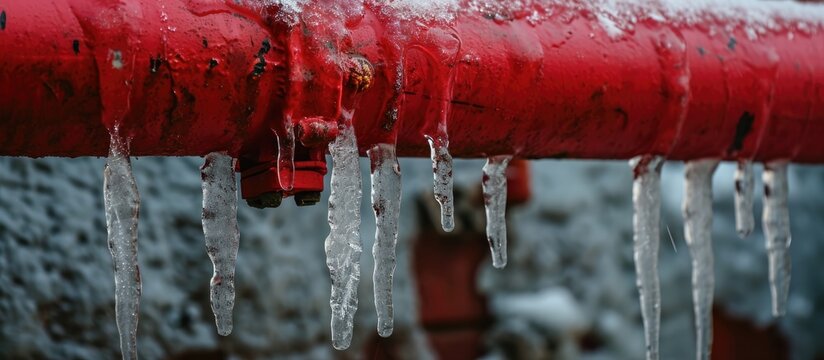Ways to Safeguard Your Plumbing from Freezing: Key Advice
Ways to Safeguard Your Plumbing from Freezing: Key Advice
Blog Article
Just how do you actually feel in regards to How to prepare your home plumbing for winter weather?

Cold weather can ruin your plumbing, specifically by freezing pipes. Below's just how to stop it from occurring and what to do if it does.
Intro
As temperatures decrease, the danger of icy pipelines boosts, possibly resulting in expensive repair work and water damage. Recognizing exactly how to avoid icy pipelines is important for homeowners in cool climates.
Recognizing Icy Pipes
What triggers pipes to ice up?
Pipelines freeze when revealed to temperatures listed below 32 ° F (0 ° C) for extended durations. As water inside the pipelines freezes, it increases, putting pressure on the pipe wall surfaces and possibly causing them to rupture.
Threats and damages
Frozen pipelines can bring about supply of water disturbances, home damages, and pricey fixings. Ruptured pipelines can flooding homes and cause extensive structural damage.
Signs of Frozen Pipeline
Identifying frozen pipelines early can stop them from breaking.
Just how to determine frozen pipes
Look for lowered water circulation from taps, unusual odors or sounds from pipes, and noticeable frost on exposed pipes.
Avoidance Tips
Shielding vulnerable pipes
Cover pipelines in insulation sleeves or make use of heat tape to protect them from freezing temperatures. Focus on pipes in unheated or external locations of the home.
Home heating techniques
Keep indoor spaces appropriately heated up, especially areas with plumbing. Open cupboard doors to allow warm air to flow around pipes under sinks.
Shielding Exterior Pipes
Yard tubes and outdoor faucets
Disconnect and drain yard tubes prior to winter season. Set up frost-proof spigots or cover outdoor faucets with insulated caps.
What to Do If Your Pipelines Freeze
Immediate activities to take
If you believe icy pipelines, maintain faucets open to relieve pressure as the ice melts. Make use of a hairdryer or towels taken in warm water to thaw pipes gradually.
Long-Term Solutions
Architectural adjustments
Think about rerouting pipes away from exterior walls or unheated locations. Include additional insulation to attics, cellars, and crawl spaces.
Updating insulation
Purchase top notch insulation for pipelines, attics, and walls. Proper insulation aids keep constant temperatures and minimizes the danger of icy pipelines.
Conclusion
Preventing frozen pipes calls for proactive measures and quick actions. By comprehending the reasons, signs, and safety nets, homeowners can secure their plumbing during winter.
6 Proven Ways to Prevent Frozen Pipes and Protect Your Home
Disconnect and Drain Garden Hoses
Before winter arrives, start by disconnecting your garden hoses and draining any remaining water. Close the shut-off valves that supply outdoor hose bibs and leave the outdoor faucet open to allow any residual water to drain. For extra protection, consider using faucet covers throughout the colder months. It’s also important to drain water from any sprinkler supply lines following the manufacturer’s directions.
Insulate Exposed Pipes
Insulating your pipes is an effective way to prevent freezing. Pipe insulation is readily available at home improvement stores and is relatively inexpensive. Pay close attention to pipes in unheated areas such as the attic, basement, crawl spaces, or garage. Apply foam insulation generously to create a buffer against the cold. You can also wrap your pipes in heat tape or thermostat-controlled heat cables for added warmth.
Seal Air Leaks
Inspect your home for any cracks or openings that could let in cold air. Seal any holes around the piping in interior or exterior walls, as well as the sill plates where your home rests on its foundation. Additionally, make sure to keep your garage door closed unless you’re entering or exiting. Leaving it open creates a significant air leak that can lead to frozen pipes.
Allow Warm Air Circulation
During cold snaps, it’s essential to allow warm air to circulate evenly throughout your home. Leave interior doors ajar to promote better airflow. Open kitchen and bathroom cabinets to help distribute heat consistently around the rooms. If you have small children or pets, be sure to remove any household chemicals or potentially harmful cleaners from open cabinets for safety.
Let Faucets Drip
A small trickle of water can make a big difference in preventing ice formation inside your pipes. When temperatures drop significantly, start a drip of water from all faucets served by exposed pipes. This continuous flow helps prevent the water from freezing. Additionally, running a few faucets slightly can relieve pressure inside the pipes, reducing the chances of a rupture if the water inside does freeze.
https://choateshvac.com/6-proven-ways-to-prevent-frozen-pipes-and-protect-your-home/

I'm very occupied with Winter Plumbing Precautions: Preventing Frozen Pipes and I really hope you enjoyed reading my post. Do you know somebody who is occupied with the topic? Be sure share it. Many thanks for your time invested reading it.
Call Today Report this page